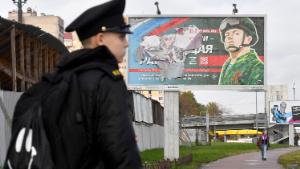Some may argue that former President Hosni Mubarak was ousted as result of the rather spontaneous mass protests that were driven by the poor living standards and various social difficulties suffered by Egyptians, which led to violent confrontations with police forces, causing the ruling regime to lose its balance, thus forcing it to sacrifice Mubarak.
This analysis does not give any credit to the question of organization, whether in the form of political parties, movements or other civil society actors. In fact, sometimes this narrative of spontaneity disregards such organizations as being a disabling force against the revolutionary process and an obstacle for the spontaneity of the masses, which can singlehandedly bring down the regime.
On the other hand, others consider the decade-old struggle waged by some bloggers and pro-democracy political groups, organizations and fronts against Mubarak’s regime as the driving force behind the ousting of the regime’s head, as it led to increased awareness of the need for change.
These two narratives are each often adopted by two opposing viewpoints; one side viewing organized political forces and groups as opportunistic entities seeking only to achieve their own interests, and the other viewing the impulsiveness and spontaneity of these masses as a danger that could threaten chaos if not controlled according to clear political goals. The truth is that these two narratives, if presented independently, would suffer many shortcomings.
The transformation of the masses from a state of passivity to the point of rebellion is not a matter of fate, but a product of complex developments that include the role played by civil society organizations. When the message relayed by some of these forces converged with the dreams and aspirations of the masses or sectors of society, this revolutionary transformation took place.
Additionally, the masses are not a homogenous entity. The masses can be divided into a number of classes, and the interests of these classes are not necessarily identical. Furthermore, within each class there are different and often conflicting groups of people who have varying willingness to revolt against the regime and face its oppressive apparatuses.
For example, in 2010, a wave of labor strikes erupted. The protesters’ demands were economic in nature, particularly opposing the free market policies that disempowered millions of workers. Nonetheless, these same workers did not necessarily participate with the same force and organization in the January 2011 mass protests that ousted Mubarak, nor did they participate in all of the sit-ins that followed. This does not mean the workers were against the revolution, or that the revolution and its slogans did not represent their demands and aspirations, as much as it means that the connection and interaction between workers and other political groups (or youth groups) that launched the 25 January call for protest was weak.
The same applies to the political forces that participated in the beginning of the revolution. All political forces, from the most revolutionary to the most conservative, participated in the revolution’s decisive battles, such as 28 January (the Friday of Anger) and 2 February (the Battle of the Camel). This unity quickly faltered until we reached the day when shoes were being raised in the face of Muslim Brotherhood’s stage in Tahrir Square on the revolution’s anniversary to protest the Brotherhood’s choice to concede with the Supreme Council of the Armed Forces and its attempts to turn the day into a day of celebration rather than one demonstrating the persistence of the revolution.
Some of the most compelling evidence to support the lack of harmony between organization and spontaneity are the sit-ins that followed Mubarak’s ouster. For instance, the 8 July sit-in began with a protest to demand immediate trials for the martyrs’ killers and maintained its momentum for several weeks. However, led by frustration and exhaustion, more and more protesters began leaving Tahrir Square each day, then a number of movements withdrew while others decided to continue on until the sit-in was dispersed by force. During the sit-in, neither the radical nor reformist movements succeeded in expanding or reinforcing the sit-in in a manner that would lead to the achievement of any real demands. On the contrary, these movements, especially those that remained until the very end, got so caught up in the day-to-day details of how to combat security informants, secure the sit-in and provide for the protesters’ daily needs that they failed to transform the sit-in into a salient force against the military’s dictatorship.
From all this we can see that the problem lies in the inability of the organized groups to work together and build on the masses’ spontaneity.
Not all organizations, parties and movements are revolutionary in nature — in fact the majority and the most powerful are reformist and conciliatory, and they view the impulsiveness of the masses as a means to break the regime, not with the intention of bringing about the change these masses aspire for, but with the intention of coming to power.
The ability of these appeasing reformers to mobilize hundreds of thousands of people to take to the streets when necessary stands in contrast to the revolutionaries’ inability to mobilize in a similar manner. The latter depend on spontaneity rather than organized mobilization.
The solution to this dilemma is not in injecting these masses with abstract revolutionary ideas, or in vulgar awareness campaigns that view the people’s silence and refusal to respond to calls for protests and sit-ins as a kind of ignorance that requires political illiteracy courses, nor does it lie in the refusal of all forms of organization and the glorification of none other than the spontaneous dragon. For although this dragon has repeatedly gone out unguided, and threw a number of violent blows to the monstrous ruling regime, it has failed to fully triumph over the junta and, as I mentioned at the beginning of this article, only caused the monster to somewhat lose its balance.
The solution simply lies in the need for these revolutionary groups to join all the spontaneous, incomplete battles being fought by the workers, students, slum dwellers and so on, even if their demands do not live up to the revolutionaries’ great expectations.
This link between the masses and the revolutionary groups must be built through all possible means of communication, including popular press, which must be seen by the people as an articulation of the reality of their daily lives and an expression of their dreams. This interaction is the only way to make these millions of people rally around these revolutionaries to get rid of the decaying regime.
Ahmed Ezzat is a member of the Revolutionary Socialists group and a lawyer at the Foundation for Freedom of Thought and Expression.
Translated by Aisha El-Awady




